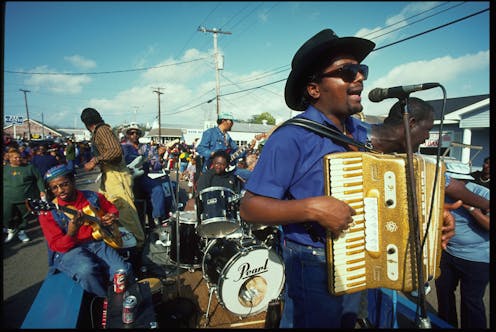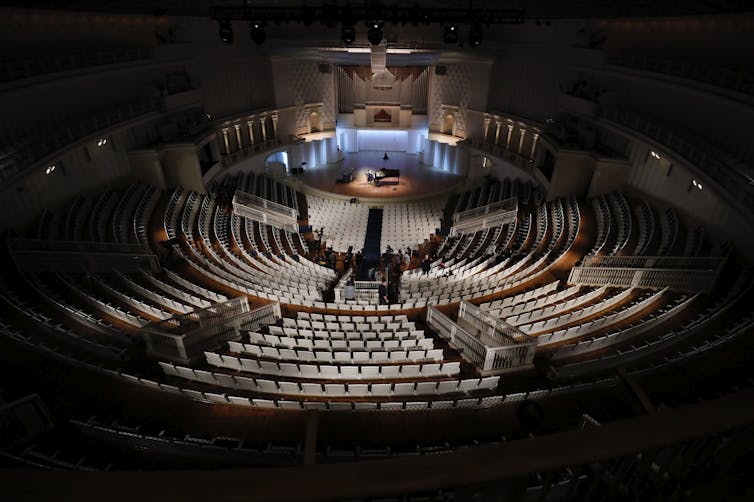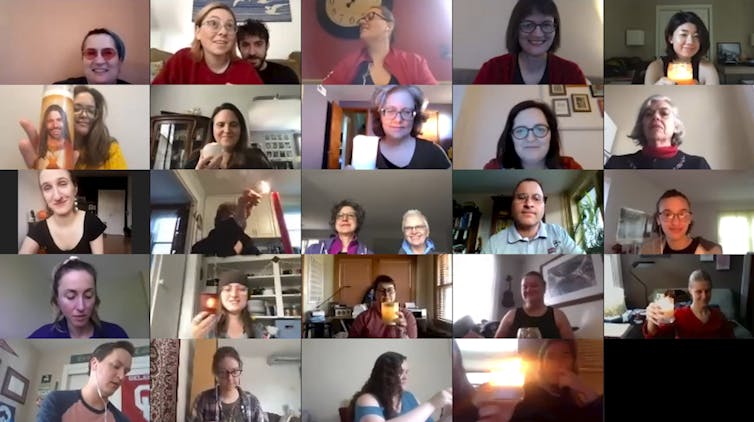Making music at a distance – how to come together online to spark your creativity
Musicians around the world can connect with you online as you keep your social distance. Try it!

People are social creatures. While many of us are making the best of social isolation, we’re much better together than apart. This is especially true with music that we create collectively – everything from jam bands and choruses to orchestras. Music connects us to each other and to our spiritual lives and can magnify our collective creativity.
What happens to music when we can no longer gather? Many of the ways we connect in person have been transferred to online transactions. Can music make this shift to a virtual connection?
I am a professor at the School of Music at the University of South Florida. I teach, among other things, creative thinking in music. In my book “To Create: Imagining the Good Life Through Music,” I write about how music helps us connect with our spirituality and, of course, with one another.
A month ago, most faculty members in the USF music department were resistant to any talk of immediate and sweeping change in the way we operate. However, as we learned more about how our well-being was at great risk, those attitudes quickly changed. In the last few weeks, my university moved all of our operations online because of COVID-19. We conduct private lessons, teach academic classes and meet together using video conferencing technology.
We had to figure out, logistically, what some people have known for quite some time. Making music online is not as bad as we thought. There are practical ways to take advantage of this time to teach yourself music and connect with other people online to create music together.

The energy of community creativity
People have been making music in online communities since at least the inception of YouTube in 2005. Individual and group performances are posted online and, for many years, music collaborations have been conducted in purely online environments.
Most of us possess an innate desire to create, to take simple things and use them to form more complex things. With music, we take notes and rhythms, melodies and harmonies, and assemble them in ways that express who we are.
When we make music as a community, we do together what is rarely possible alone. We form bands and choruses of fellow musicians and create intricate, complex and sometimes wonderfully simple music that flows from our desire to make sounds that are expressive and beautiful.
That can be in person. But it also can be online. My advice? Find your community. Here are a few ideas to better connect musically with others while keeping your distance.
Music and people online
This is an excellent time in the history of music education to learn how to play an instrument online. There are vast music lesson resources available online, beginning with YouTube. Try starting or expanding your reach as a musician with online resources including Fender Play, Playground Sessions, Yousician, Lessonface and TakeLessons.com. Most of these resources are free for the first few months, and then require US$10 per month to continue.
You can also start a band online. Maybe you are, like me, a musician who is displaced and without people to play with because of social distancing. You don’t have to be alone.
JamKazam and Soundtrap offer platforms where you can connect and collaborate with other musicians. Create a login, a profile, input the instruments/voice that you would like to collaborate with, and you can be off and running in a world of music. Your first song is free, and then every one after that costs around $3.
One morning, I received an invitation from a drummer in Germany who wanted to jam with me on Jamkazam. Coverwithme, Bandontheweb and Guitarmasterclass.net are other places where people are forming bands and coming together musically online.
If you are a musician who used to enjoy sharing your music with other people by performing, take this time to acquaint or reacquaint yourself with online social media services. I upload a daily improvisation video, my primary means of musical self-expression, and find it therapeutic – a catharsis from the emotional drain of social distancing.

COVID-19 has forced music educators to think about online learning. Friends in Minnesota recently compiled a list of resources for teaching band online. Researchers at Purdue University in Indiana and the University of Windsor in Windsor, Ontario, are reviewing the ways that people learn music online.
This way of learning has many unexpected benefits, and it is not likely to go away any time soon. Music teachers may embrace this way of thinking and doing, both in times of crisis and when our lives return to normal.
[You need to understand the coronavirus pandemic, and we can help. Read The Conversation’s newsletter.]
Clint Randles does not work for, consult, own shares in or receive funding from any company or organization that would benefit from this article, and has disclosed no relevant affiliations beyond their academic appointment.
Read These Next
The celibate, dancing Shakers were once seen as a threat to society – 250 years later, they’re part
‘The Testament of Ann Lee,’ Mona Fastvold’s 2025 film, depicts part of the long history of Shaker…
As DOJ begins to release Epstein files, his many victims deserve more attention than the powerful me
Powerful men connected to Jeffrey Epstein are named, dissected and speculated about. The survivors,…
How to reduce gift-giving stress with your kids – a child psychologist’s tips for making magic and a
Depending on family circumstances and a child’s personality type, gift giving runs the gamut of fun…






